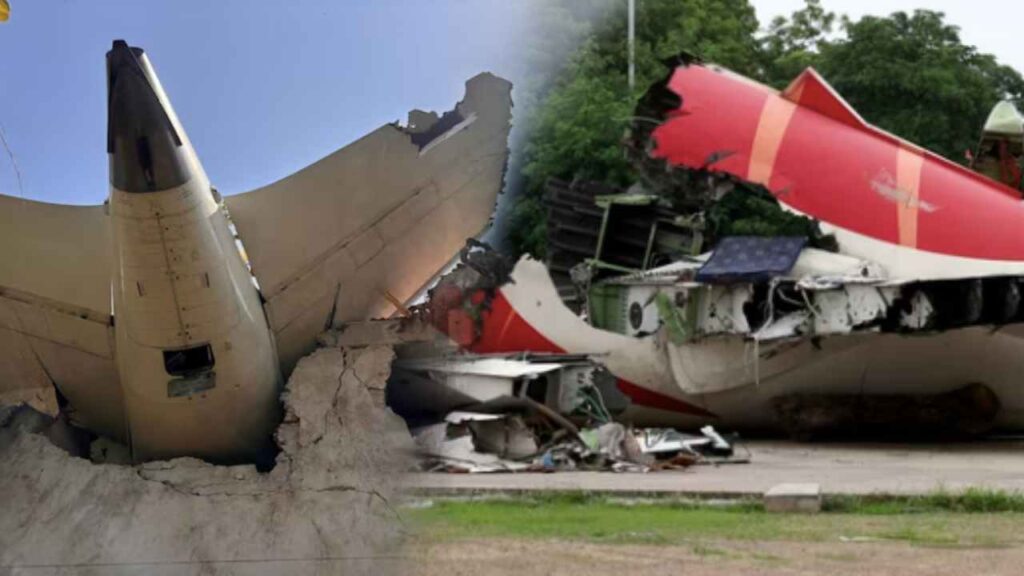A preliminary investigation into the deadly Air India crash reveals the final moments of flight AI171, which crashed seconds after takeoff from Ahmedabad, killing 260 people
July 12, 2025 – OTATSO.UK
Table of Contents
- The Fatal Sequence
- Cockpit Voice Recordings Reveal Final Moments
- Understanding Black Box Technology
- Historical Context
- Investigation Continues

A preliminary investigation into the Air India crash that claimed 260 lives last month has revealed crucial details about the final moments of the ill-fated flight, showing how a catastrophic fuel system failure led to disaster within seconds of takeoff.
The Aircraft Accident Investigation Bureau (AAIB) released its preliminary report on Saturday, detailing the sequence of events that led to the crash of Air India flight AI171, a Boeing 787-8 Dreamliner bound for London’s Gatwick from Gujarat’s Ahmedabad on June 12.
The Fatal Sequence
According to the report, both engines on the Boeing 787-8 Dreamliner lost thrust shortly after takeoff because the aircraft’s fuel control switches had been turned off. The investigation, based on data recovered from the aircraft’s black boxes, shows that disaster struck within moments of the aircraft becoming airborne.
At 08:08:39 GMT, the aircraft lifted off from Runway 23. Just three seconds later, at 08:08:42 GMT, after reaching a maximum airspeed of 180 knots, both engine fuel cutoff switches transitioned from RUN to CUTOFF position one after another with a time gap of just one second.
“The Engine N1 and N2 began to decrease from their take-off values as the fuel supply to the engines was cut off,” the report states.
Cockpit Voice Recordings Reveal Final Moments
The black box cockpit voice recordings captured a tense exchange between the pilots in those final seconds. One pilot asked the other, “Why did you cut off the fuel?” The response came, “I did not do so,” according to the AAIB report.
Despite desperate attempts to restore power, with both fuel cutoff switches being moved back to RUN position within 14 seconds of the initial cutoff, the aircraft was unable to recover. Airport CCTV footage showed the Ram Air Turbine (RAT) deploying during the initial climb immediately after lift-off, indicating the aircraft had lost primary power.
At 08:09:05 GMT, one of the pilots transmitted “MAYDAY MAYDAY MAYDAY” – just 26 seconds after takeoff. Data recording stopped at 08:09:11 GMT, and crash fire tenders left the airport premises for rescue and firefighting operations at 08:14:44 GMT.
Understanding Black Box Technology
The investigation’s findings were made possible through data recovered from the aircraft’s black boxes – the cockpit voice recorder and flight data recorder. Despite their name, these crucial devices are actually orange in color to make them easier to locate in wreckage, sometimes deep in oceans.
Black boxes are typically installed in a plane’s tail section, considered the most survivable part of the aircraft. They are built with multiple protective layers including titanium or stainless steel outer shells that resist crushing and penetration, thermal insulation to withstand intense fire, and shock-absorbing materials to protect internal electronics during violent impacts.
The cockpit voice recorder collects radio transmissions and sounds such as pilots’ voices and engine noises, while the flight data recorder monitors at least 88 parameters including altitude, airspeed, and heading. Modern systems can collect the status of more than 1,000 other characteristics, from wing flap positions to smoke alarms.
Historical Context
The technology behind black boxes dates back to the 1930s, when French aviation engineer François Hussenot developed a way to record a plane’s speed, altitude and other parameters onto photographic film. In the 1950s, Australian scientist David Warren conceived the idea for the cockpit voice recorder.
The term “black box” may stem from Hussenot’s device, which used film and “ran continuously in a light-tight box.” Orange was chosen as the color from the beginning to make the devices easy to find, though some theories suggest the name comes from boxes turning black when charred in crashes.
Investigation Continues
The preliminary report represents the initial phase of what will be a comprehensive investigation into the crash. The AAIB’s findings raise critical questions about how and why the fuel control switches were activated, though the full investigation will need to determine the exact cause of this fatal sequence.
The crash of AI171 represents one of the most tragic aviation disasters in recent history, with investigators now working to understand how a routine departure turned into catastrophe within seconds of leaving the ground.
This is a developing story. Updates will be provided as the investigation progresses.
A passionate content creator specializing in viral trends, fashion, beauty, and news. With a keen eye for the latest in style and pop culture, Dilshan Senarath delivers fresh, engaging insights that keep audiences informed and inspired. Expertise in curating viral stories with style and impact.